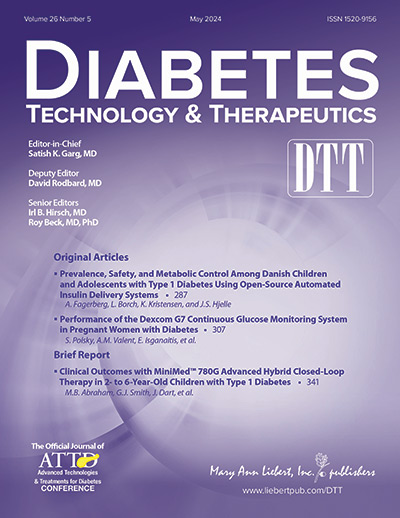Time in range is associated with carotid intima-media thickness in type 2 diabetes.
IF 6.3
2区 医学
Q1 ENDOCRINOLOGY & METABOLISM
引用次数: 133
Abstract
BACKGROUND Time in range (TIR) is an emerging metric of glycemic control and was reported to be associated with microvascular complications of diabetes. We sought to investigate the association of TIR obtained from continuous glucose monitoring (CGM) with carotid intima-media thickness (CIMT) as a surrogate marker of cardiovascular disease (CVD). METHODS Data from 2, 215 patients with type 2 diabetes were cross-sectionally analyzed. TIR of 3.9-10.0 mmol/L was evaluated with CGM. CIMT was measured using high-resolution B-mode ultrasonography and abnormal CIMT was defined as a mean CIMT ≥ 1.0mm. Logistic regression models were used to examine the independent association of TIR with CIMT. RESULTS Compared with patients with normal CIMT, those with abnormal CIMT had significantly lower TIR (P < 0.001). The prevalence of abnormal CIMT progressively decreased across the categories of increasing TIR (P for trend <0.001). In a fully adjusted model controlling for traditional risk factor of CVD, each 10% increase in TIR was associated with 6.4% lower risk of abnormal CIMT. Stratifying the data by sex revealed that TIR was significantly associated with CIMT in males but not in females. In a subset of patients (n=612) with complete data on diabetic retinopathy and albuminuria, we found that the relationship between TIR and CIMT remained to be significant, regardless the status of microvascular complications. CONCLUSIONS TIR is associated with CIMT in a large sample of patients with type 2 diabetes, suggesting a link between TIR and macrovascular disease.范围时间与2型糖尿病患者颈动脉内膜-中膜厚度相关。
背景范围内时间(TIR)是一种新兴的血糖控制指标,据报道与糖尿病的微血管并发症有关。我们试图研究通过连续血糖监测(CGM)获得的TIR与作为心血管疾病(CVD)替代标志的颈动脉内膜-中膜厚度(CIMT)的关系。方法对2125例2型糖尿病患者的数据进行横断面分析。用CGM评估3.9-10.0mmol/L的TIR。使用高分辨率B型超声测量CIMT,异常CIMT定义为平均CIMT≥1.0mm。使用Logistic回归模型检查TIR与CIMT的独立相关性。结果与CIMT正常患者相比,CIMT异常者的TIR显著降低(P<0.001)。在TIR增加的类别中,异常CIMT的患病率逐渐降低(趋势<0.001的P)。在控制CVD传统风险因素的完全调整模型中,TIR每增加10%,异常CIMT的风险就降低6.4%。按性别对数据进行分层显示,TIR与男性CIMT显著相关,但与女性无关。在一组拥有糖尿病视网膜病变和蛋白尿完整数据的患者(n=612)中,我们发现,无论微血管并发症的状况如何,TIR和CIMT之间的关系仍然显著。结论在大量2型糖尿病患者中,STIR与CIMT相关,表明TIR与大血管疾病之间存在联系。
本文章由计算机程序翻译,如有差异,请以英文原文为准。
求助全文
约1分钟内获得全文
求助全文
来源期刊

Diabetes technology & therapeutics
医学-内分泌学与代谢
CiteScore
10.60
自引率
14.80%
发文量
145
审稿时长
3-8 weeks
期刊介绍:
Diabetes Technology & Therapeutics is the only peer-reviewed journal providing healthcare professionals with information on new devices, drugs, drug delivery systems, and software for managing patients with diabetes. This leading international journal delivers practical information and comprehensive coverage of cutting-edge technologies and therapeutics in the field, and each issue highlights new pharmacological and device developments to optimize patient care.
 求助内容:
求助内容: 应助结果提醒方式:
应助结果提醒方式:


